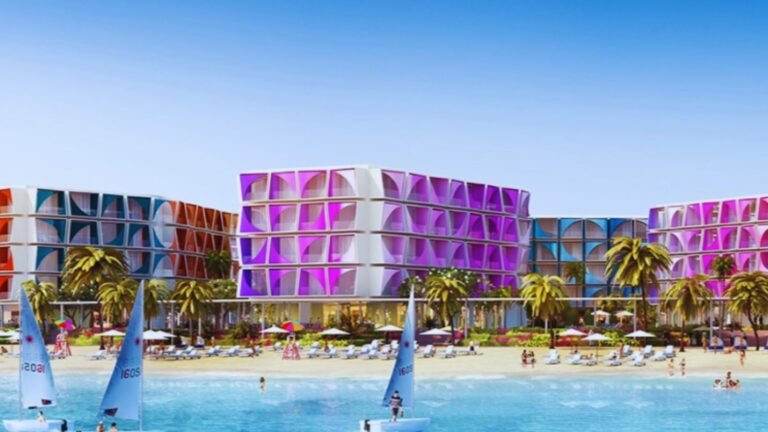Dubai’s Roads and Transport Authority (RTA) Launches Major Al Safa Street Improvement Project to Revolutionize Traffic Flow

Dubai, July 1, 2025 — In a significant move to enhance urban mobility and support the city’s rapid growth, Dubai’s Roads and Transport Authority (RTA) has officially launched the Al Safa Street Improvement Project. This ambitious infrastructure upgrade aims to drastically reduce travel times, double road capacity, and improve connectivity in one of Dubai’s busiest and most vibrant districts.
Project Overview and Scope
Spanning approximately 1,500 metres, the project covers the stretch of Al Safa Street from its junction with Sheikh Zayed Road to the intersection with Al Wasl Street. The comprehensive development plan includes the construction of two bridges and two tunnels, with a combined length exceeding 3,120 metres. Additionally, the project involves widening existing surface roads, upgrading key intersections, and modernizing traffic signal systems to ensure smoother and safer traffic flow.
Once completed, the travel time along this corridor is expected to drop dramatically from 12 minutes to just 3 minutes, while the road’s vehicle capacity will double from 6,000 to 12,000 vehicles per hour in both directions. This improvement will significantly ease congestion and enhance the overall driving experience for commuters.
Strategic Importance of Al Safa Street
Al Safa Street is a crucial artery connecting major parts of Dubai. It serves a district known for its dynamic mix of tourism, culture, sports, residential, and commercial activities. Key landmarks in the area include City Walk, the Coca-Cola Arena, prestigious educational institutions, luxury hotels, and high-end restaurants.
His Excellency Mattar Al Tayer, Director General and Chairman of the Board of Executive Directors of RTA, emphasized the project’s importance:
“Al Safa Street Improvement Project is part of RTA’s master plan to enhance the road network in the area, which also includes the development of Umm Suqeim and Al Wasl Streets. The project serves a vital district renowned for hosting numerous tourism, cultural, and sporting events and is home to key landmarks. It also enhances connectivity with Downtown Dubai and nearby developments along Financial Centre Street, an area inhabited by over one million residents.”
Key Infrastructure Elements
The project’s infrastructure components are designed to optimize traffic flow and safety:
| Infrastructure Element | Description | Length (metres) | Capacity (vehicles/hour) |
|---|---|---|---|
| Bridge 1 | Four-lane bridge serving traffic from Al Wasl Street towards Sheikh Zayed Road and Financial Centre Street | 1,005 | 6,400 |
| Bridge 2 | Two-lane bridge accommodating traffic from Al Satwa Road towards Sheikh Zayed Road and Financial Centre Street | 360 | 2,800 |
| Tunnel 1 | Two-lane tunnel serving traffic from Sheikh Zayed Road and Financial Centre Street towards Al Wasl Street | 1,005 | 3,200 |
| Tunnel 2 | Tunnel at Al Wasl Street and Al Safa Street intersection to facilitate smoother traffic movement | ~750 | N/A |
Table: Major infrastructure components of the Al Safa Street Improvement Project.
Enhancing Urban Experience and Sustainability
Beyond traffic improvements, the project integrates pedestrian-friendly and community-enhancing features. Dedicated pedestrian walkways and cycling tracks will be developed to encourage active mobility and promote healthier lifestyles. The design also includes vibrant urban spaces and landscaped areas to foster community interaction and improve the aesthetic appeal of the district.
Al Tayer highlighted the focus on blending functionality with creativity and sustainability:
“The project places strong emphasis on creative and aesthetic elements, including the development of dedicated pedestrian walkways and cycling tracks, vibrant urban spaces that encourage community interaction, and the integration of a dynamic public realm enhanced by landscaped areas.”
Complementary Upgrades and Safety Measures
The Al Safa Street project also involves upgrading lighting systems, signage, rainwater drainage, and relocating utilities to support the new infrastructure. These enhancements are critical to improving road safety and ensuring the durability of the upgraded corridor.
Supporting Dubai’s Vision for Smart and Sustainable Urban Growth
This project aligns with Dubai’s broader vision to create a smart, sustainable, and highly connected urban environment. By expanding road capacity and reducing congestion, the RTA aims to improve the quality of life for residents and visitors, while supporting the city’s economic and social development.
The Al Safa Street Improvement Project is part of a larger RTA master plan that includes upgrades to Umm Suqeim and Al Wasl Streets, reflecting a comprehensive approach to modernizing Dubai’s transport infrastructure in response to its rapid population growth and urban expansion.
Expected Benefits at a Glance
| Benefit | Details |
|---|---|
| Travel Time Reduction | From 12 minutes to 3 minutes on Al Safa Street |
| Increased Road Capacity | Doubling from 6,000 to 12,000 vehicles per hour |
| Improved Safety | Modernized intersections, tunnels, bridges, and traffic signals |
| Enhanced Connectivity | Better links between Sheikh Zayed Road, Al Wasl Street, Downtown Dubai, and Financial Centre Street |
| Sustainable Mobility | Dedicated pedestrian and cycling infrastructure |
| Community Spaces | Landscaped urban areas promoting social interaction |
Conclusion
Dubai’s RTA continues to demonstrate its commitment to improving the city’s transport network through innovative and forward-thinking projects like the Al Safa Street Improvement Project. By significantly reducing travel times, doubling road capacity, and enhancing pedestrian and cycling infrastructure, this development will not only ease daily commutes but also contribute to a more sustainable and livable city.
As Dubai grows into a global hub for tourism, business, and culture, such infrastructure investments are vital to maintaining its competitive edge and ensuring a high quality of life for over a million residents in the surrounding areas.






